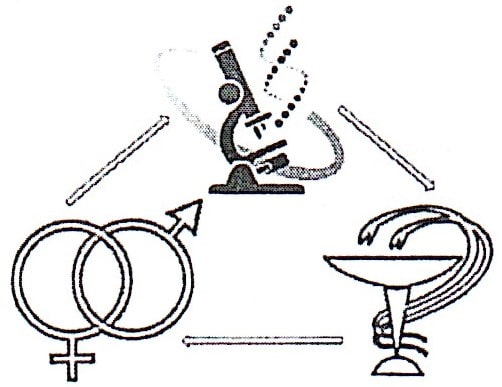Ефективність способів дослідження проб ґрунту на наявність збудників кокцидіозів
Анотація
В роботі наведені дані щодо порівняльної ефективності загальновідомих (Романенко-Гуджабідзе, Долбіна і ін.) методів, а також удосконаленого способу дослідження ґрунту на наявність ооцист кокцидій. Встановлено, що найбільш ефективним за кількістю позитивних проб, загальної кількості виявлених ооцист і їх кількістю в перерахунку на 1 кг ґрунту виявився запропонований спосіб.
Завантаження
Посилання
Bakunzi, F. R., Thwane, S. N., Motesi, L. E., & Dzoma, B. M. (2010). Diversity and seasonal occurrence of Eimeria species in a mixed flock of communally reared sheep and goats in Mafikeng in the North West Province, South Africa. Journal of South African Veterinary Association, 81(3), 148150. doi: 10.4102/jsava.v81i3.137.
Barwick, R. S., Mohammed, H. O., White, A. B., & Bryan, R. T. (2000). Detection of Cryptosporidium parvum and Cryptosporidium muris in soil samples. Biology and Fertility of Soils, 31(5), 385–390. doi: 10.1007/s003749900185.
Chinchilla, M., Valerio, I., Sanchez, R., & Duszynski, D. (2018). Intestinal Life Cycle of Eimeria caliginosa (Apicomplexa: Eimeriidae) From the Dusky Rice Rat, Melanomys caliginosus (Rodentia: Cricetidae: Sigmodontinae), In Costa Rica. Journal of Parasitology, 104(4), 347352. doi: 10.1645/16-98.
Dada, B. J. O. (1979). A new technique for the recovery of Toxocara eggs from soil. Journal of Parasitology, 53, 141–144. doi:10.1017/S0022149X00005873.
Dolbin, D. A., Lutfullin, M. H., & Sokolina, F. M. (2014). Obsledovaniya pochvyi na yaytsa gelmintov. Rossiyskiy parazitologicheskiy zhurnal, 2, 7076 (in Russian).
Dubey, J. P. (1998). Toxoplasma gondii oocyst survival under defined temperatures. Journal of Parasitology, 84, 862–865. doi: 10.2307/3284606.
Kotelnikov, G. A., (1984). Gelmintologicheskie issledovanija zhivotnykh i okruzhajushchej sredy. Moscow: Kolos (in Russian).
Lassen, B., Lepik, T., & Bangoura, B. (2013). Persistence of Eimeria bovis in soil. Parasitology Research, 112(7), 24812486. doi: 10.1007/s00436-013-3413-4.
Lassen, B., Lepik, T., & Järvis, T. (2014). Seasonal recovery of Eimeria oocysts from soil on naturally contaminated pastures. Parasitology Research, 113(3), 993–999. doi: 10.1007/s00436-013-3731-6.
Lélu, M., Gilot-Fromont, E., Aubert, D., Richaume, A., Afonso, E., Dupuis, E., … Villena, I. (2011). Development of a sensitive method for Toxoplasma gondii oocyst extraction in soil. Veterinary Parasitology, 183 (1–2), 59–67. doi: 10.1016/j.vetpar.2011.06.018.
Loh, A. G., & Israf, D. A. (1998). Tests on the centrifugal flotation technique and its use in estimating the prevalence of Toxocara in soil samples from urban and suburban areas of Malaysia. Journal of Parasitology, 72, 39–42. doi: 10.1017/S0022149X0000095X.
Marshall, R. N., Catchpole, J., Green, J. A., & Webster, K A. (1998) Bovine coccidiosis in calves following turnout. Veterinary Record, 143(13), 366367. doi: 10.1136/vr.143.13.366.
Novozhilov, K. A. (2014). Optimizatsiya metodov sanitarno-parazitologicheskikh issledovaniy ob"ektov sredy obitaniya cheloveka (Diss. kand. med. nauk: 03.02.11). Moskva (in Russian).
Novozhilov, K. A., & Chernikova, E. A. (2014). Aktual'nost' i sovershenstvovanie sanitarno-gel'mintologicheskikh metodov issledovaniya pochvy. Meditsinskaya parazitologiya i parazitarnye bolezni, 1, 5859 (in Russian).
Oge, H., & Oge, S. (2010). Quantitative comparison of various methods for detecting eggs of Toxocara canis in samples of sand. Veterinary Parasitology, 92, 75–79. doi: 10.1016/S0304-4017(00)00276-4.
Olsen, M. E., Phillips, J. G., Guselle, N., & McAllister, T. (1999). Giardia cyst and Cryptosporidium oocyst survival in water, soil and cattle feces. Journal of Environmental Quality, 28, 1991–1996. doi: 10.2134/jeq1999.00472425002800060040x.
Peng, X., Murphy, T., & Holden, N. M. (2008). Evaluation of the Effect of Temperature on the Die-Off Rate for Cryptosporidium parvum Oocysts in Water, Soils, and Feces. Applied Andenvironmental Microbiology, 74 (23), 7101–710. doi: 10.1128/AEM.01442-08.
Ramirez, N. E., & Sreevatsan, S. (2006). Development of a sensitive detection system for Cryptosporidium in environmental samples. Veterinary Parasitology, 136 (3–4), 201–213. doi: 10.1016/j.vetpar.2005.11.023.
Rehman,T. U., Khan, M. N., Sajid, M. S., Abbas, R. Z., Arshad, M., Iqbal, Z., & Iqbal, A. (2011). Epidemiology of Eimeriaand associated risk factors in cattle of district Toba Tek Singh. Pakistan. Parasitology Research, 108, 11711177. doi: 10.1007/s00436-010-2159-5.
Sharma, D. K., Paul, S., Rout, P. K., Mandal, A., Bhusan, S., Sharma, N., & Kushwah, Y. K. (2017). Caprine coccidiosis in semi-aridIndia: Dynamics and factors affecting fecal oocysts count. Journal of Advanced Veterinary and Animal Research, 4(1), 5257. doi: 10.5455/javar.2017.d190.
Sroka, J., Karamon, J., Dutkiewicz, J., Wójcik-Fatla, A., & Cencek, T. (2018). Optimization of flotation, DNA extraction and PCR methods for detection of Toxoplasma gondii oocysts in cat faeces. Annals of Agricultural and Environmental Medicine, 25(4), 680–685. doi: 10.26444/aaem/97402.
Wang, C. R., Xiao, J. Y., Chen, A. H., Chen, J., Wang, Y., Gao, J. F., & Zhu, X. Q. (2010). Prevalence of coccidial infection in sheep and goats in northeastern China. Veterinary Parasitology, 174 (3-4), 213217. doi: 10.1016/j.vetpar.2010.08.026.
Zilberman, A., Zimmels, Y., Starosvetsky, J., Zuckerman, U., & Armon, R.H. (2009). A Two-Phase Separation Method for Recovery of Cryptosporidium Oocysts from Soil Samples. Water Air and Soil Pollution, 203 (1), 325-334. doi: 10.1007/s11270-009-0015-y.
Переглядів анотації: 1504 Завантажень PDF: 1114





